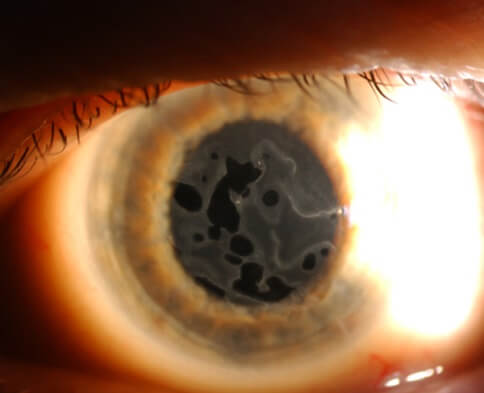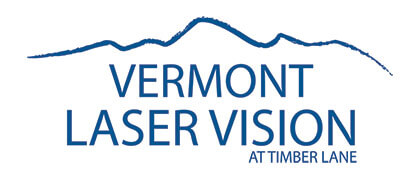Anterior Basement Membarane Dystrophy (ABMD)
What is ABMD?
Anterior Basement Membrane Dystrophy (ABMD) is a condition that affects the cornea in both eyes and is more common as people age. Most patients with ABMD never experience any problems. Others may experience blurred vision or may have pain or discomfort from corneal erosions (often described as a severe sharp sensation upon awakening). ABMD can be diagnosed by your eye doctor during a routine eye exam and typically shows a pattern of “fingerprint lines” on the cornea (see photo below). The cornea is the clear “window” that covers the iris and pupil, allowing light into the eye. The cornea is coated with a thin layer of cells called epithelium. Epithelium grows back if it is scratched or abraded, protecting the eye from infection. The corneal epithelium is usually perfectly smooth allowing light to pass through without distortion.
ABMD is a condition that affects the “basement membrane” which is normally a smooth and even layer between the epithelium and the underlying cornea. In patients with ABMD, the basement membrane is thickened and irregular. This may blur the vision and the bonds that allow the epithelium to adhere to the cornea are weaker than normal, which can lead to the epithelium becoming loose and eroding in areas. When this occurs, the condition is called corneal erosion. Corneal erosions are often painful, similar to a corneal abrasion but they occur spontaneously, with no trauma.

What is the Recommended Treatment for ABMD?
There is no treatment to prevent ABMD. If ABMD is causing painful erosions or blurred vision then there are a variety of treatment options. For many patients, using artificial tears can help to keep the surface of the cornea smooth and comfortable and help improve vision. For patients with corneal erosions, Muro 128 5% ointment applied to the eyes at bedtime can reduce or eliminate the episodes of discomfort. If needed, other treatments include a temporary bandage contact lens and procedures that remove the abnormal epithelial layer and promote stronger adherence by treating the deeper layer with a laser or other techniques. These procedures usually create a smoother, more regular surface for the purpose of improving comfort and/or quality of vision.


